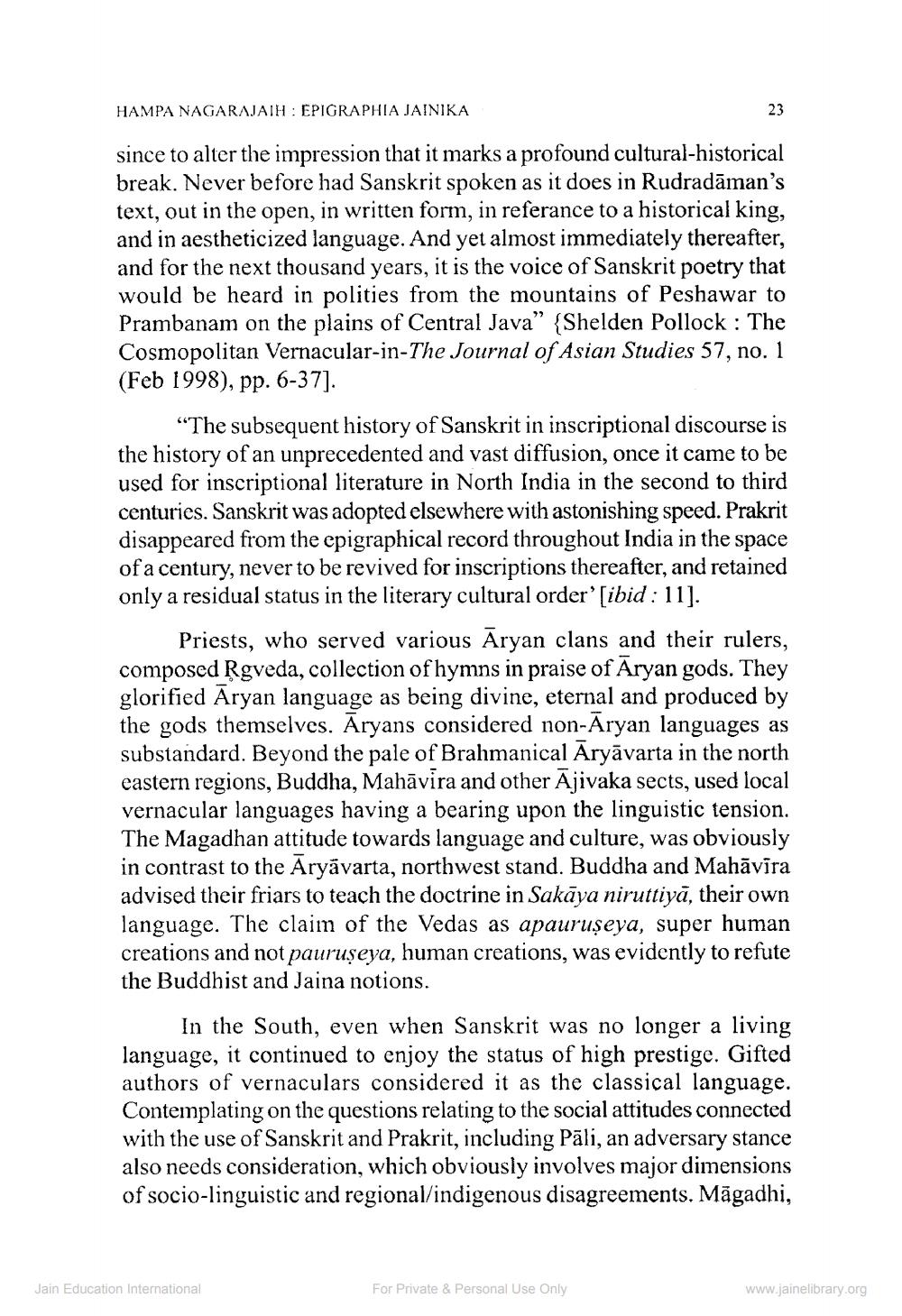________________
HAMPA NAGARAJAIH: EPIGRAPHIA JAINIKA
since to alter the impression that it marks a profound cultural-historical break. Never before had Sanskrit spoken as it does in Rudradāman's text, out in the open, in written form, in referance to a historical king, and in aestheticized language. And yet almost immediately thereafter, and for the next thousand years, it is the voice of Sanskrit poetry that would be heard in polities from the mountains of Peshawar to Prambanam on the plains of Central Java” (Shelden Pollock : The Cosmopolitan Vernacular-in-The Journal of Asian Studies 57, no. 1 (Feb 1998), pp. 6-37].
“The subsequent history of Sanskrit in inscriptional discourse is the history of an unprecedented and vast diffusion, once it came to be used for inscriptional literature in North India in the second to third centuries. Sanskrit was adopted elsewhere with astonishing speed. Prakrit disappeared from the epigraphical record throughout India in the space of a century, never to be revived for inscriptions thereafter, and retained only a residual status in the literary cultural order'[ibid: 11].
Priests, who served various Aryan clans and their rulers, composed Rgveda, collection of hymns in praise of Aryan gods. They glorified Aryan language as being divine, eternal and produced by the gods themselves. Aryans considered non-Aryan languages as substandard. Beyond the pale of Brahmanical Āryāvarta in the north eastern regions, Buddha, Mahāvira and other Ājivaka sects, used local vernacular languages having a bearing upon the linguistic tension. The Magadhan attitude towards language and culture, was obviously in contrast to the Aryāvarta, northwest stand. Buddha and Mahāvīra advised their friars to teach the doctrine in Sakāya niruttiyā, their own language. The claim of the Vedas as apauruşeya, super human creations and not pauruseya, human creations, was evidently to refute the Buddhist and Jaina notions.
In the South, even when Sanskrit was no longer a living language, it continued to enjoy the status of high prestige. Gifted authors of vernaculars considered it as the classical language. Contemplating on the questions relating to the social attitudes connected with the use of Sanskrit and Prakrit, including Pāli, an adversary stance also needs consideration, which obviously involves major dimensions of socio-linguistic and regional/indigenous disagreements. Māgadhi,
Jain Education International
For Private & Personal Use Only
www.jainelibrary.org




